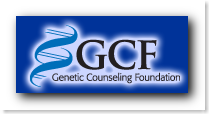This is a very good point, getting all the data organized into a fashion where it can be used and analyzed. Back a few months ago when I interviewed Patrice Milos, Vice President and Chief Scientific Officer, of Helicos BioSciences I asked the same question, and also if each interpretation would be the same. She answered that is a topic of discussion all through genomics research and there is not a real comprehensive answer to nail it down since genomics and personalized medicine is still such a new and emerging science that is working it’s way slowly into the clinical side of healthcare as advancements are made. One thing Dr. Milos and I agreed on totally though, it’s all about software to make the processes happen.
Helicos BioSciences and Personalized Medicine - Featured Interview with Dr. Patrice Milos
In the related reading below there are a few posts from the recent past that will add some additional information on the entire process and where it is today. Listed below are a couple other sites that offer some additional information as genomics relates to the clinical side of healthcare. 
No, these are not mug shots below, these are the first 10 people to have their entire genomic sequence compiled, under the direction of George Church from Harvard. One is Dr. John Halamka, CIO of Beth Israel Deaconess/Harvard. He has also spoken about how his results were analyzed and the information he obtained from the process. You can find his blog here and under the blog roll on the site. His picture is the first one on the second row.
“The first set of data--released to participants in October--hints at both the promise of sequencing and the current limitations of genetic analysis. John Halamka, CIO of Harvard Medical School and another one of the 10 original volunteers, learned that he carries a mutation for Charcot Marie-Tooth disease, an inherited neurological disorder. This rare variation would not have been found with existing SNP arrays. But since Halamka survived childhood unscathed, and only three other people in the world have been shown to carry that particular mutation, it's hard to know what impact, if any, it has had on his health. Perhaps many people carry the variation with no ill effect, and the link between the disease and the mutation has been overstated. Or perhaps the gene has a broader impact than expected, raising the risk of other neurological diseases. (Or, as George Church notes, the finding may simply be an error.)”
This has been a long process and how it will continue to evolve, we are not real certain on all levels at present, but the research and development continues and contributes as new developments arise with new property discoveries about the many proteins found in our DNA. If this is the first time reading about sequencing, read the entire article at the link below and check out the related reading section for additional information, fascinating and sometimes puzzling, but it is here for a purpose. Sequencing takes a phenomenal amount of algorithms to process. BD
When it comes to sequencing DNA, time is money, and Pacific Biosciences' commercial machines, due out in 2010, could prove to be the fastest ever made. It took the Human Genome Project roughly $300 million and 13 years to work out the sequence of the three billion DNA base pairs in a composite human genome, a task completed in 2003. By October 2008, researchers using a variety of new types of machines were saying that they could sequence an individual genome for less than $100,000; one company promises a $5,000 genome by next spring. And Pacific Biosciences predicts that by 2013, its machines will be able to sequence a person's genome in 15 minutes, for less than $1,000. Up to now, scientists have sequenced the genomes of a handful of people, and that's given them a general sense of human variability. But fast, cheap sequencing technology could make it practical to read the genomes of thousands, perhaps millions, of people. By combing through those myriad genomes and linking specific DNA sequences to different characteristics--handedness, height, blood pressure, and susceptibility to anxiety, to name a few--scientists should be able to unravel the complex interplay of genetic variants that makes each individual unique. Most important, that kind of sequencing capacity might finally reveal the inherited basis of common diseases--a riddle that has been taunting geneticists for decades.
Technology Review: Interpreting the Genome
Genomics Related Reading:
Personalized medicine will rely on IT – It’s all about Software
Complete Genomic Sequence $5000 Next Year – Wholesale
Helicos BioSciences and Personalized Medicine - Featured Interview with Dr. Patrice Milos





0 comments :
Post a Comment